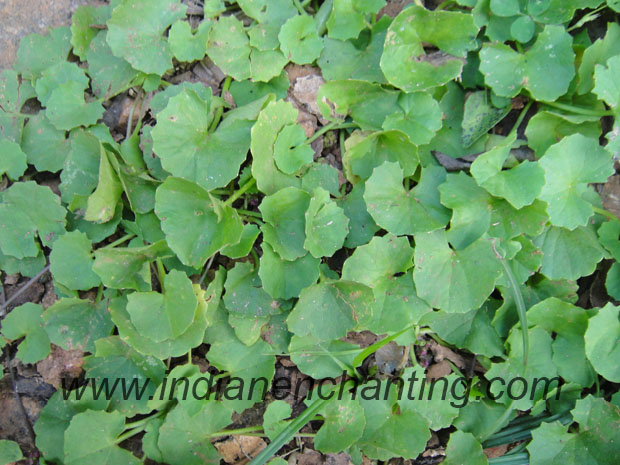
Centella asiatica Linn
Genus: Centella
Botanical name: Centella asiatica Linn / Hydrocotyle asiatica Lin
PLANT NAME IN DIFFERENT LANGUAGES
Sanskrit: Mandukaparni, Manduki
English: Indian pennywort
Hindi: Brahmamandooki, Bemgsag
Malayalam: Kudangal, Muthil
MEDICINAL PROPERTIES
Indian pennywort grows in tropical swampy areas.[3] The stems are slender, creeping stolons, green to reddish-green in color, connecting plants to each other. It has long-stalked, green, reniform leaves with rounded apices which have smooth texture with palmately netted veins. The leaves are borne on pericardial petioles, around 2 cm. The rootstock consists of rhizomes, growing vertically down. They are creamish in colour and covered with root hairsl
The flowers are pinkish to red in colour, born in small, rounded bunches (umbels) near the surface of the soil. Each flower is partly enclosed in two green bracts. The hermaphrodite flowers are minute in size (less than 3 mm), with 5-6 corolla lobes per flower. Each flower bears five stamens and two styles. The fruit are densely reticulate, distinguishing it from species of Hydrocotyle which have smooth, ribbed or warty fruit. The crop matures in three months, and the whole plant, including the roots, is harvested manually.
Indian pennywort may be useful in the treatment of anxiety. Treatment of wounds, burns, and ulcerous skin ailments, and prevention of keloid and hypertrophic scars. Extracts of the plant have been employed to treat second- and third-degree burns. Extracts have been used topically to accelerate healing, particularly in cases of chronic postsurgical and post-trauma wounds. Extracts have been administered orally to treat stress induced stomach and duodenal ulcers.
The Indian pennywort medicinal plant is used for the treatment of neuro toxic snake. This medicinal plant energises the nerves in human being.
